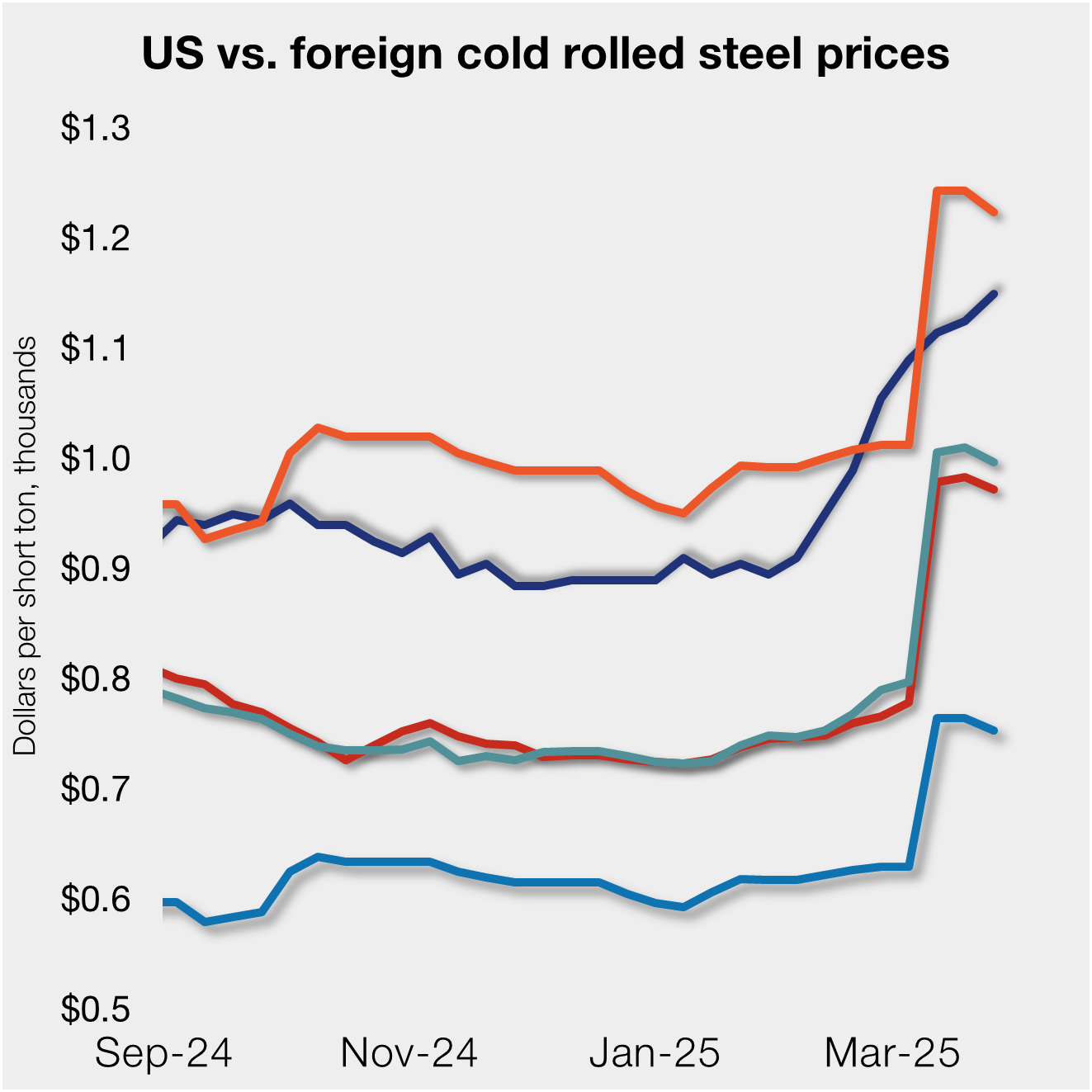Steel Products

CRU: Huge Steel Demand Boost From Recent Bond Issuance in China
Written by Zhenzhen Jiang
November 10, 2023
CRU’s analysis shows that 7–12 million metric tons of additional steel demand will be generated following the issuance of RMB1 trillion bonds by the central government of China. The immediate impact of this is that market confidence has improved, which has supported prices. The additional steel demand is expected to materialize over 2024 and 2025.
New Bonds to Help Support Infrastructure Projects
In late October, the Chinese central government announced the issuance of RMB1 trillion (USD$137 billion) in bonds to help local governments implement specific infrastructure projects. These would include specific focus on the following two aspects:
- Disaster prevention and relief: Many parts of China suffered severe flooding in the summer of 2023. We expect that these funds will support the reconstruction of the affected areas and support the people living there.
- There will be also focus on water conservancy which will include urban drainage and flood control systems.
Half of the bond amount i.e., RMB0.5 trillion is expected to be issued by the end of 2023. The remaining is expected in Q1 2024 and both tranches will provide funding for projects which commence by mid-2024.
The government’s spending on water conservancy projects had been disrupted by unprecedented typhoon rainfall in northern China in the last few months (see Figure 1). In response to the extreme weather events, the planned increase in sovereign bond issuance will be allocated to rebuild and upgrade water conservancy infrastructure. Hence, we expect positive upgrades given the additional bonds will be more focused on water-related investment and thus support the growth of infrastructure investment in water conservancy.

Steel Prices Have Increased Following the Announcement
Chinese domestic steel prices immediately increased as market confidence grew following the announcement (see Figure 2). While rebar prices increased by RMB100 per metric ton, HRC prices grew by RMB130 per metric ton. Before the announcement, steel prices were trending down due to weak demand and continuous production in the country.
The improvement in confidence stemmed from the fact that the spending growth is expected to generate additional steel demand, particularly construction and water-related sectors, and will include additional demand for:
- Construction steel to be used in dam-related infrastructure projects
- Steel plate products to be processed to large pipes
Therefore, market transactions increased immediately following this announcement. Chinese domestic steel prices rebounded with improved market sentiment (see Figure 2). While rebar prices increased by RMB100 per metric ton, HRC prices grew by RMB130 per metric ton. Before the announcement, steel prices were down by ~RMB110 per metric ton month-over-month (MoM) due to weak demand and elevated production.

Over 7 Million Metric Tons of Additional Steel Demand Expected Over the Next Two Years With Potential Upside Beyond 2025
We expect 7–12 million metric tons of additional steel demand will be generated due to the bonds issuance. However, considering the construction cycle of water conservancy projects varies from six months to several years, most of the demand will be realized in 2024 and 2025, i.e. when steel procurements for the projects take place. Any support towards steel demand for the rest of 2023 will be limited.
CRU will continue to track the debt issuance closely and update in future publications.
This article was first published by CRU. Learn more about CRU’s services at www.crugroup.com.
Zhenzhen Jiang
Read more from Zhenzhen JiangLatest in Steel Products

Nucor keeps HRC price unchanged
Nucor paused its weekly hot-rolled (HR) coil price this week, keeping it flat for the first time since Jan. 21. This comes after a nine-week rally that saw the company increase prices by double-digits for eight of those weeks.

Nucor increases plate prices by $40/ton
Nucor aims to increase prices for steel plate by $40 per short ton (st) with the opening of its May order book. The Charlotte, N.C.-based steelmaker said the increase was effective with new orders received on Friday, March 28, in a letter to customers dated the same day. The company said the price hike applied […]

US CRC price gains ground over imports
US cold-rolled (CR) coil prices increased again this week, while offshore prices declined.

SMU Steel Demand Index momentum slows
Steel Market Update is pleased to share this Premium content with Executive members. Contact info@steelmarketupdate.com for information on how to upgrade to a Premium-level subscription. Growth in SMU’s Steel Demand Index eased in March after reaching a four-year high in late February. Despite a moderate gain, the index remains in expansion territory. The Steel Demand […]

Leibowitz: Impact of tariffs on US manufacturers
On February 10, President Trump announced a massive restructuring of tariffs on steel and aluminum. Those changes took effect on March 12, and they will impact US manufacturing. What will the impact be? Bye-bye exclusions Perhaps the most important change, which hits imports from all countries, is the loss of a product exclusion process to […]
